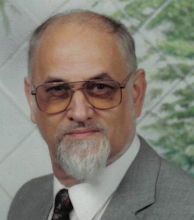 Those that know it all don't ask, and those that don't know what to ask for don't ask. The curious may ask but don't often recognise nor understand the answer. It is the wise who ask, listen to the answers and ask again. As I have said to my students many times, 'If you don't ask, you don't get!'
Those that know it all don't ask, and those that don't know what to ask for don't ask. The curious may ask but don't often recognise nor understand the answer. It is the wise who ask, listen to the answers and ask again. As I have said to my students many times, 'If you don't ask, you don't get!'In the world of academia it seems to me that often students are not asking the right questions and wondering why the answers obtained do not meet their needs.
Nowhere is this more apparent than in the area of e-Portfolios. It appears that far too often technicians appear not to understand what teachers and learners actually want. Furthermore, those responsible for teaching and learning are often not aware of what they should be asking for.
As I have often said, we are in a situation where we use new technologies only to replicate previous forms of delivery. This scenario is typically illustrated by those who use digital projectors and Interactive WhiteBoards in as clumsy a delivery as when using OHPs.
Nowhere is this more clearly expressed than in a recent blog that I came across, I quote:
"It is sometimes difficult to see past the technology and remember that it is used for particular purposes, in especially, for reflective practice - which is why e-portfolios seem especially popular on courses such as PGCE, nursing and medicine, where reflective practice is part of professional requirements. It seems to be a little more difficult to find a true purpose for the technology in other areas..."
My response to such sentiments will be obvious to some readers:
On reflection and why other disciplines don't use it:
Perhaps it is because other disciplines are still working by 19th Century methods?
Teaching and Learning has moved a long way since some of our Professors went to school. Even 5 year-olds are now taught to reflect on their activities. Certainly much GCSE and 'A'-level coursework requires 'evaluation'. Here is another point, 'reflection' is often taught as being about the artefact whereas the most significant parts are probably about the process and the person. I have taught for many years that the reflection or evaluation must substantively deal with 5 aspects:
Perhaps it is because other disciplines are still working by 19th Century methods?
Teaching and Learning has moved a long way since some of our Professors went to school. Even 5 year-olds are now taught to reflect on their activities. Certainly much GCSE and 'A'-level coursework requires 'evaluation'. Here is another point, 'reflection' is often taught as being about the artefact whereas the most significant parts are probably about the process and the person. I have taught for many years that the reflection or evaluation must substantively deal with 5 aspects:
- The Product
- The Process
- The Person
- The Problems, and
- The Potential.
And I expect any user to be enabled by the e-Portfolio to demonstrate all of these. The technology should be transparent and as intuitive as any wordprocessor, spreadsheet or blog.




No comments:
Post a Comment